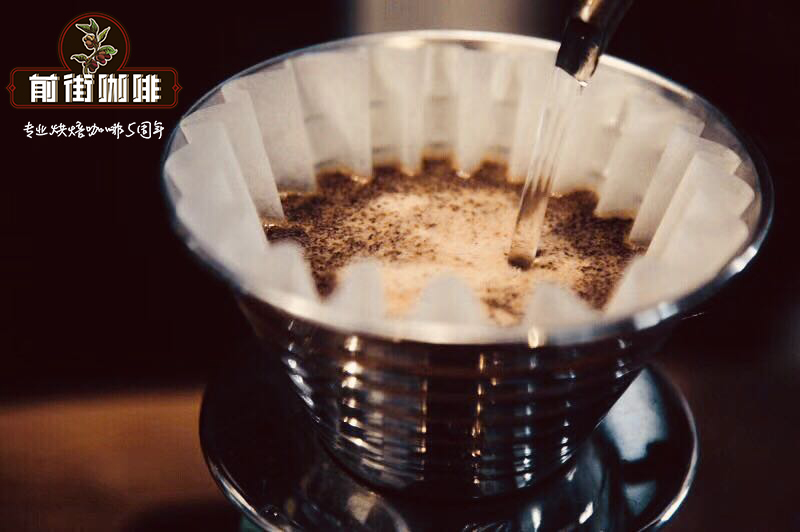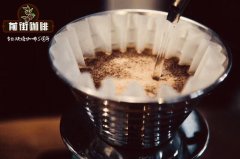Differences in the characteristics and taste of coffee bean varieties Tippika coffee and bourbon coffee

Professional coffee knowledge exchange more coffee bean information please follow the coffee workshop (Wechat official account cafe_style)
Qianjie-A brief introduction to common coffee varieties
There are more than 6000 species of coffee trees, most of which are tropical trees and shrubs. There are four main kinds of coffee trees in the world, of which only two are of real commercial value and have been planted in large quantities, and the quality of the coffee beans produced by them is also higher than that of other coffee trees.
Typica: the oldest native variety in Ethiopia, all Arabica are derived from Tibica. The top leaf of Tiebika is bronzed and the bean body is oval or thin in shape; the flavor is elegant, but the physique is weak, the disease resistance is poor and the fruit yield is less. Excellent manor beans such as the Blue Mountains of Jamaica, Mantenin of Sumatra, and Kona of Hawaii all belong to Tibica. The bronze color of the top leaf of Tibica is one of the features.
Bourbon: a variant of the early (prehistoric coffee) Tibika that changed its shape from thin to round after it was transplanted to Yemen. It was named bourbon in 1715 after France transplanted round beans from Yemeni mocha to the island of Bourbon on the east coast of Africa (renamed Reunion after the French Revolution). Bourbon beans spread to Brazil and Central and South America in 1727, and the British transplanted Yemeni mochas to St. Helena Island in 1732 (where Napoleon was later imprisoned). Bourbon is the winner of the American boutique coffee cup test.
[gene mutant]
Pointed Bourbon (Bourbon Pointu): found in Bourbon Island in 1810, beans changed from round to pointed, with only half the caffeine content, but in small amounts, weak and extremely precious (mostly cultivated in the laboratory).
Elephant bean (Maragogype, or Elephant Bean): Tibica's best-known variety of beans, first discovered in 1870 in the Maragogype bean-producing region of the state of Bahia in northeastern Brazil, is at least three times larger than the average Arabica, hence the name. The taste of elephant bean is poor in low altitude area, but it has better flavor at high altitude, mild sour taste and sweet fragrance. (the right side of the picture is like beans)
Geisha / Geisha: a derivative of the Tibika family, it was exported from the Geisha Mountains of southern Ethiopia in 1931 (Geisha is synonymous with Japanese geisha). It was unknown in many countries and was transplanted to Panama in the 1960s and did not begin to win cup tests until 2005.
Kenyan "SL28" and "SL34": the bourbon line, screened and cultivated by French and British missionaries and researchers in Kenya in the early 20th century, has adapted to Kenya's high-concentration phosphate soil for a century, giving birth to Kenyan characteristics of sour elves; top Kenyan coffee comes from these two varieties, but it loses its flavor when transplanted elsewhere.
Yellow bourbon (Bourbon Amarello, or YellowBourbon): a bourbon variety endemic to the Brazilian state of Sao Paulo, where the coffee fruit does not turn red and is orange when ripe. It was later found that the pericarp of other local bourbon-derived varieties also turned yellow.
Kaddura (Caturra)
It is a single gene variant of bourbon found in Brazil in the 1950s. It has better yield and disease resistance than bourbon, and the tree is shorter and easy to harvest. Unfortunately, it has the same problem as bourbon-- as a result, it takes a year off for a year. The flavor is equal to or slightly worse than bourbon beans.
But it is more adaptable, can be planted with high density, does not need shade trees, and can be vibrant in direct exposure to the sun, so it is also called "exposed coffee" (Sun Coffee).
Kaddura is suitable for high altitude areas ranging from 700m to 1700 m, but the higher the altitude, the better the flavor, and the bean yield is relatively reduced. There are also variants of yellow Kaddura in Central and South America, but the wind rating is not as good as Huang bourbon.
Pacas (Pacas): a bourbon variety found in El Salvador. In 1935, the Salvadoran coffee farmer "Don Alberto Pacas" selected a highly productive San Ramon bourbon variety to be planted on a farm. In 1956, his coffee tree yielded more fruit than the same kind of coffee tree. Professor "Dr. William Cogwill" of the University of Florida identified this as a genetic mutation in bourbon and named it "Pacas".
Pacas, with its high output and good quality, is popular in Central America. Currently, 68% of El Salvador is bourbon, while Pacas has 29%.
Vera Saatchi (Villa Sarchi): the bourbon variety, first discovered in Costa Rica in the 1960s, has often appeared on the cup test list of excellence in recent years, making it a promising dark horse. This is a rare variety bred through the cross of red bourbon tree species. Strong wind resistance, preference for high altitude environment, excellent acidity and various fruit aromas, high sweetness, bright and delicate citrus acidity and low raisin and nut aromas, high complexity and full balance
Kona: although planted at an altitude of several hundred meters, Kona from the Big Island of Hawaii, with a mild sea breeze and fertile volcanic soil, has an incomparably clean acidity and sweetness. Compared with the blue mountains with higher elevations, it is even worse.
Blue Mountain (BlueMountain): blue Mountain, which is popular all over the world and hard to get a bean, comes from the iron pickup family. Why is Blue Mountain so hot and expensive?! It is mostly because it is contracted by the royal army, and partly because it is not satisfied with soil and water and is in poor condition once it leaves Jamaica. After 200 years of domestication, Blue Mountain has evolved successfully in Jamaica, and its resistance to fruit rot is better than that of ordinary iron pickups.
[Arabica intraspecific hybridization] (Intraspecific Hybrid)
Catuai: Kaduai is a hybrid of New World and Kaddura. It inherits the advantage of Kaddura's low stature and makes up for the weakness of Arabica fruit. As a result, it is not easy to fall when the strong wind blows. The biggest regret is that its overall flavor is slightly more monotonous than Kadura.
Kaduai also has the difference between red fruit and yellow fruit, and red fruit wins more often than yellow fruit. Kaduai, Kaddura, New World and bourbon are the four main varieties of coffee in Brazil.
Pacamara: the hybrid variety of Pacas (Pacas) and elephant bean (Maragogype). The size of the bean is second only to the elephant bean. It is an excellent variety produced in El Salvador in the 1950s. It has achieved good results in cup test in recent years.
Knowledge: coffee beans are the most complete form to preserve the flavor of coffee and ensure that the coffee is fresh and original.
In short: Qianjie is a coffee research hall, happy to share the knowledge about coffee with you, we share unreservedly just to make more friends fall in love with coffee, and there will be three low-discount coffee activities every month. The reason is that Qianjie wants to make more friends drink the best coffee at the lowest price, which has been Qianjie's tenet for 6 years!
END
Important Notice :
前街咖啡 FrontStreet Coffee has moved to new addredd:
FrontStreet Coffee Address: 315,Donghua East Road,GuangZhou
Tel:020 38364473
- Prev

Do you know the three kinds of coffee? how do you pronounce and translate iron pickup coffee in English?
Professional Coffee knowledge Exchange more coffee bean information please follow the coffee workshop (Wechat official account cafe_style) Front Street-Coffee variety profile there are more than 100 kinds of coffee in the world, two of which are Arabica and Robusta/Canephora. These two kinds of coffee are strong in taste, composition and growing conditions.
- Next

A brief introduction to Coffee Bean varieties typica Coffee is a world-famous coffee bean variety.
Professional coffee knowledge exchange more coffee bean information please follow the coffee workshop (Wechat official account cafe_style) front street-three major varieties of coffee about 40 species of coffee, but can produce commercial value coffee beans are only Arabica species, Robusta species, Liberia species, these three species are called the three major native species of coffee. 1. Arabica species (scientific name Coffea
Related
- Beginners will see the "Coffee pull flower" guide!
- What is the difference between ice blog purified milk and ordinary milk coffee?
- Why is the Philippines the largest producer of crops in Liberia?
- For coffee extraction, should the fine powder be retained?
- How does extracted espresso fill pressed powder? How much strength does it take to press the powder?
- How to make jasmine cold extract coffee? Is the jasmine + latte good?
- Will this little toy really make the coffee taste better? How does Lily Drip affect coffee extraction?
- Will the action of slapping the filter cup also affect coffee extraction?
- What's the difference between powder-to-water ratio and powder-to-liquid ratio?
- What is the Ethiopian local species? What does it have to do with Heirloom native species?

